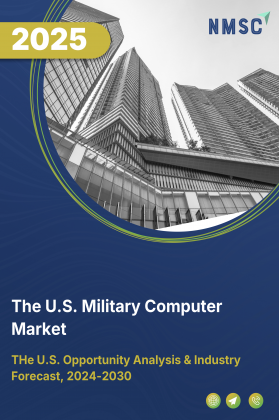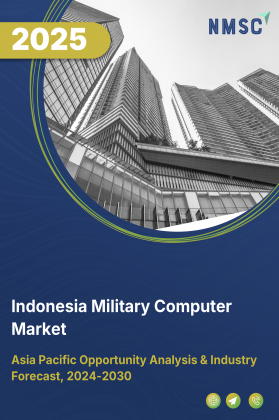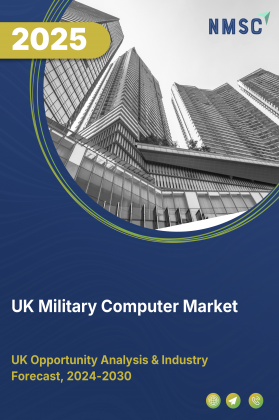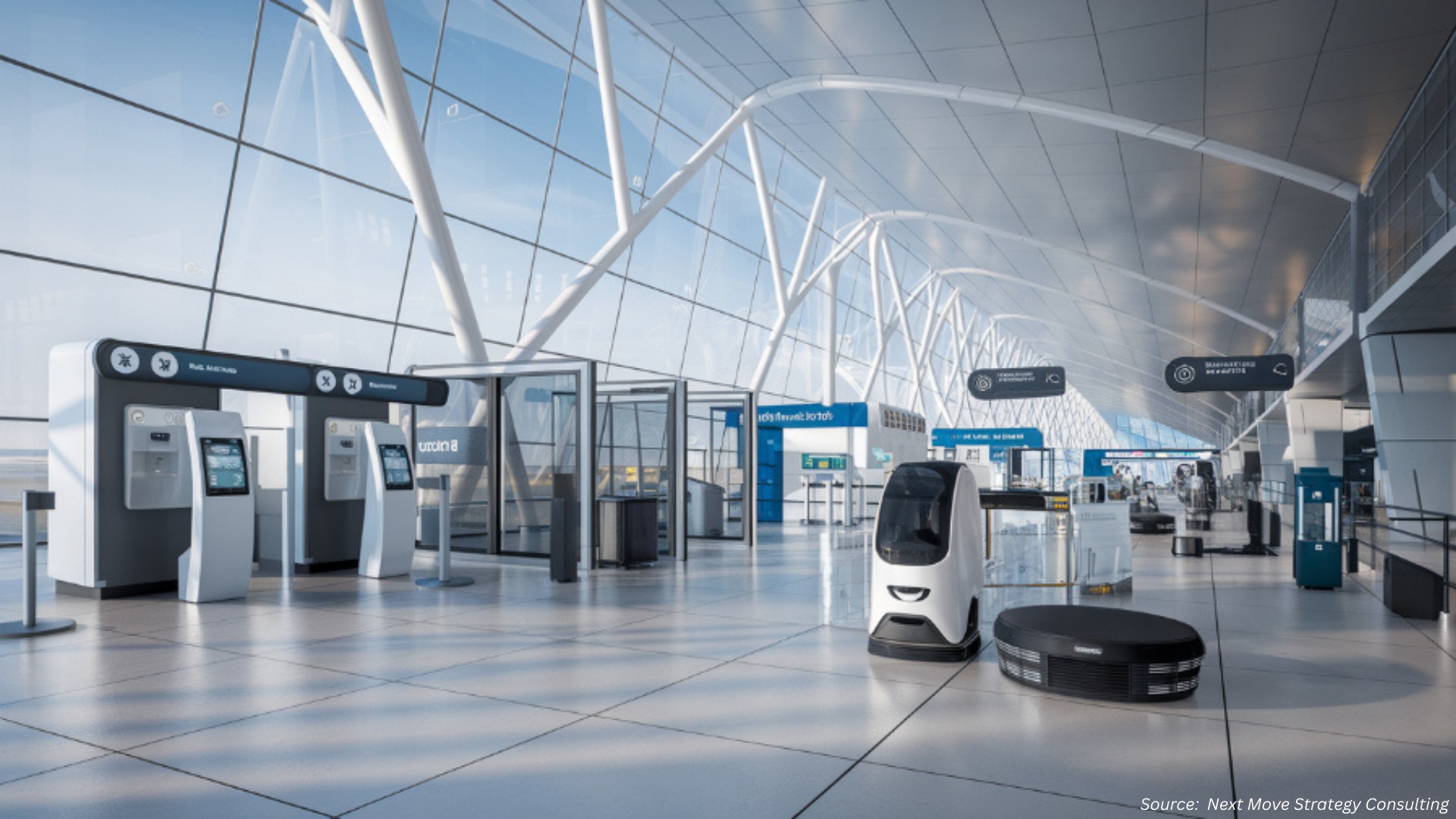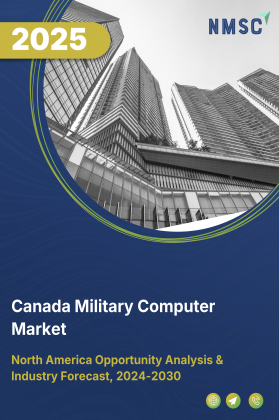
Canada Military Computer Market by Component (Hardware, Software, and Service), by Product (rugged computer, Embedded Computer, and Wearable Computer), by Application (Command and Control Systems, Communication Systems, Combat and Tactical Operations, Intelligence, Surveillance, and Reconnaissance (ISR) Systems, and Others), and by End-User (Army, Navy, and Air Force) – Opportunity Analysis and Industry Forecast, 2025–2030
Industry: Aerospace & Defense | Publish Date: 05-Nov-2025 | No of Pages: 82 | No. of Tables: 117 | No. of Figures: 62 | Format: PDF | Report Code : AD3653
Industry Outlook
The Canada Military Computer Market size was valued at USD 501.3 Million in 2025, and is projected to grow to USD 553.33 million by 2025. Additionally, the industry is expected to continue its growth trajectory, reaching USD 770.1 million by 2030, at a CAGR of 6.8% from 2025 to 2030.
The factors such as increasing government investments along with rising adoption of advanced technologies drives market growth. However, constraints in budget and cyber security problems pose significant challenges to market expansion. Conversely, the application of AI and ML technologies promises bright future prospects to improve operating efficiency and decision-making ability. Additionally, industry leaders such as BAE Systems and Curtiss-Wright Corporation are initiating different activities in an effort to improve their market position and increase their product portfolio.
These projects are anticipated to fuel innovation and uptake in the military computer sector, enhancing overall effectiveness and preparedness of defense forces. As AI and ML evolve, organizations are looking to create robust communication and autonomous solutions, providing increased security, privacy, and user control. With the market becoming mature, growing demand for greater operational efficiency and decision-making power is anticipated to spur growth.
Increased Government Investment Driving the Canada Military Computer Market Growth
The increasing military expenditure by the Government of Canada, aimed at enhancing its capabilities in digital technologies and advanced weaponry, is driving the growth of the military computer market. As per the most recent report of the Government of Canada, an investment strategy is being drafted to invest around USD 5.6 billion in military development for the next five years, beginning in 2024. In addition, the government pledged a long-term investment of around USD 50 billion for the next 20 years. These large-scale commitments towards embracing innovative digital technologies, updating its defense infrastructure, and enhancing its military operations are responsible for growing the military computer market in the nation
Rising Adoption of Advanced Technologies Driving the Canada Military Computer Market Demand
The increasing use of latest technologies, including autonomous drones and other tactical weapons, is highly contributing to the development of the military computer market. For example, Recently the Canadian Government announced to invest USD 2.49 billion in Remotely Piloted Aircraft Systems for the Canadian Armed Forces. This initiative by the Government of Canada intends to facilitate surveillance, operation, and interoperability with the U.S. and NATO. The deployment of RPAS and other advanced systems creates a significant requirement for tactical computers as these technologies require reliable, high-speed computing solutions for real-time decision-making, mission planning, and data analytics, thus, boosting market growth.
Budget Constraints and Cyber security Challenges Restraints Market Growth
The fiscal challenges pose a major threat to the military computer sector because the establishment and deployment of high-end computing systems entail massive investment, and the competing priorities within the defense budget constrain the rate of modernization. Additionally, the growing danger of high-level cyberattacks on military systems contributes to the challenge. This necessitates robust cyber security measures for defense infrastructure and sensitive data, they are expensive to develop and deploy. Budgetary constraints hamper the deployment of new cutting-edge technologies, and leave crucial systems open to potential cyberattacks, thereby hampering the market growth of Canada.
Integration of Advanced Technologies Creates Future Market Opportunities
The integration of advanced technologies, such as artificial intelligence and machine learning creates possibility for military computer market growth. The integration of AI and ML becomes essential as these technologies enhance operational efficiency and decision-making capabilities. Military computers with the capability to support autonomous weapons, such as drones and unmanned vehicles, provide safe, dependable communication between them and are providing new avenues of opportunity for innovation in the military industry. With defense expenditure increasing and the demand for sophisticated technologies growing, the applications of AI and ML in military computers are expected to fuel the market to record growth.
Competitive Landscape
Several players operating in the Canada military computer industry include BAE Systems, Curtiss-Wright Corporation, Kontron AG, Microchip Technology Inc., Collins Aerospace, Intel Corporation, Barco NV, Captec Plc., Dell Technologies, Advanced Micro Devices, Inc., Rambus, Core System, Panasonic Holdings Corporation, Rheinmetall AG, Teledyne Technologies Incorporated and others.
Canada Military Computer Market Key Segments
By Component
-
Hardware
-
Processors
-
Input/Output Devices
-
Others
-
-
Software
-
Operating Systems
-
Application Software
-
-
Service
By Product
-
Rugged Computer
-
Rugged Laptops
-
Rugged Tablets
-
Rugged Displays
-
Rugged Handhelds
-
-
Embedded Computers
-
Wearable Computers
By Application
-
Command and Control Systems
-
Communication Systems
-
Combat and Tactical Operations
-
Intelligence, Surveillance, and Reconnaissance (ISR) Systems
-
Others
By End User
-
Army
-
Navy
-
Air Force
Key Players
-
BAE Systems
-
Curtiss-Wright Corporation
-
Kontron AG
-
Microchip Technology Inc.
-
Collins Aerospace
-
Barco NV
-
Captec Plc.
-
Dell Technologies
-
Advanced Micro Devices, Inc.
-
Rambus
-
Core System
-
Rheinmetall AG
-
Teledyne Technologies Incorporated
Report Scope and Segmentation
|
Parameters |
Details |
|
Market Size in 2025 |
USD 553.33 Million |
|
Revenue Forecast in 2030 |
USD 770.1 Million |
|
Growth Rate |
CAGR of 6.8% from 2025 to 2030 |
|
Analysis Period |
2024–2030 |
|
Base Year Considered |
2024 |
|
Forecast Period |
2025–2030 |
|
Market Size Estimation |
Million (USD) |
|
Growth Factors |
|
|
Companies Profiled |
15 |
|
Market Share |
Available for 10 companies |
|
Customization Scope |
Free customization (equivalent up to 80 working hours of analysts) after purchase. Addition or alteration to country, regional, and segment scope. |
|
Pricing and Purchase Options |
Avail customized purchase options to meet your exact research needs. |

















 Speak to Our Analyst
Speak to Our Analyst



